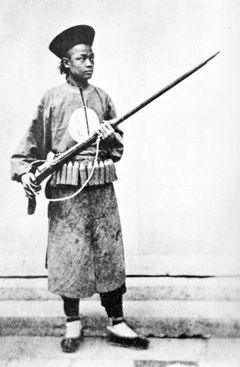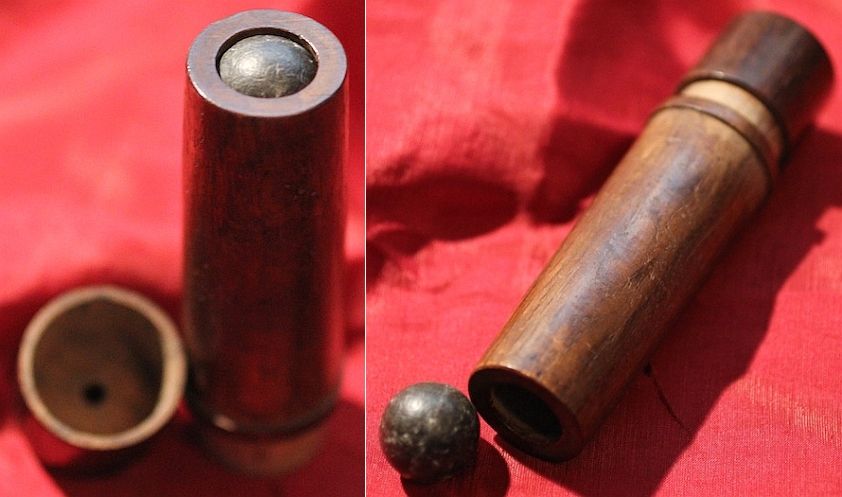Maybe the term 'firelock' should be used above, in place of flintlock, as the progression was (disregarding wheellocks) of shaphaunce, miquelet, English lock, doglock, to the true French-type flintlock).
I also agree with TobJohn for the Colonies that once there was access to more reliable ignition arms, that is what was wanted! And I've read the same citation a few times in many places. And I believe I've also read that if/when the NDNs had firelocks, they were traded to them by the French.
Early 'Arm' Battles - This site here makes the claim that matchlocks and wheellocks were used with each other for ~100-years, but no links or such discussion as posed is addressed:
https://owlcation.com/humanities/Ma...nd-Flintlocks-How-Early-Small-Arms-Were-Fired
Snaphaunce - Link =
Snaphance - Wikipedia [See any emphasis I added ... ]
The snaphance was used from the mid 16th century, most commonly in pistol form as a weapon for officers and cavalry. It was used alongside the inferior wheellock in the 16th and 17th centuries, with different countries favoring different mechanisms. James Turners'
Pallas Armata, written in the 1630s, noted that the snaphance (and other flintlocks) reigned supreme among cavalry in France, Britain, and the Dutch Republic, while the wheellock was still more common in the German lands: "The French use locks with half bends (snaphaunces), and so do for the most part the English and Scots; the Germans rore or wheel-locks; the Hollanders make use of both."
Fragility, complexity, and cost kept it from replacing the matchlock in the hands of infantry, though the latter issue became less prominent as technology improved. By 1645 a matchlock musket cost 10 shillings in Britain compared to 15 shillings for a flintlock musket. However, flintlocks were still much cheaper than wheellocks; in 1631 the Royal Armoury's purchase records show the going rate as 3 pounds (60 shillings) for a pair of wheellock pistols versus 2 pounds (40 shillings) for a pair of flintlock pistols.
[3]
By about 1680, it was gradually superseded and was still occasionally issued to reinforcements for Portugal for the British Army in the Wars of the Spanish Succession of 1703 and in Northern Italy where it was still in use until the 1750s. In Europe, and especially France, the snaphance was replaced by the
flintlock with its combined steel/pan cover starting from about 1620. In England, a hybrid mechanism called the
English Lock replaced the snaphance from the same date. Both the flintlock and the English lock were cheaper and less complex than the snaphance.
The snaphance dominated the New England gun market until it fell out of favor in the middle of the 17th Century. Virginia, Massachusetts, and Connecticut outlawed the outdated mechanism by the late 17th century.
[4]
English Civil War - It still was volley fire that ruled the day and the later development of the bayonet that gave a musketeer the battlefield advantage. Reading through some of these links ... there's no real measure one way or the other - by my read anyway. But what a great question!
Websites
https://www.historyonthenet.com/english-civil-war-weapons
https://earlofmanchesters.co.uk/the...eller-devastating-weapon-of-the-17th-century/
Abstract - Journal of Conflict Archaeology
chrome-extension://efaidnbmnnnibpcajpcglclefindmkaj/https://dspace.lib.cranfield.ac.uk/bitstream/handle/1826/14894/Ballistics_of_seventeenth_century_musket_balls-2019.pdf?sequence=4
Here's some content from that research paper above
[along with my thoughts]:
Introduction - 17th Century muskets Inspection of the 52 weapons in the Littlecote Collection (The Royal Armouries, Leeds, UK) suggested that the main weapon used in the English Civil War was typically a 10 bore matchlock musket with a 48 "(1.22 m) long barrel;
[That is one HEAVY musket ... so maybe there would be a tactical advantage 'if' firelocks users had a smaller bore and lighter arm ... but I doubt it, plus they still fired in volley fire, rank and file, etc.]
Conclusion - Wadding was originally thought to have been used by 17th Century musketeers. However, it was shown that the appearance of musket balls fired without wadding showed a closer resemblance to some of the original 17th Century musket ball than those fired with wadding. It was thought that wadding would have increased the muzzle velocity of the musket by preventing gas leakage past the musket ball in the barrel. This was found to be the case, but the effect was surprisingly low. Variations in bore diameter showed a significant variation in velocity,
especially when fired without a wad because of the change in gas leakage past the ball, but produced little change on the outcome of the final resting position of the musket ball.
[See the underlined parts above ... while they don't address the OP's question, I find those claims to be intriguing!]












